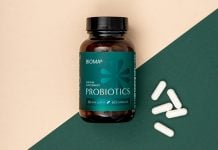
The Surprising Benefits of Mustard
Have you ever found yourself doubled over in pain, desperately searching for a remedy to alleviate those pesky muscle cramps? Look no further than your kitchen pantry!
Mustard for Cramps: A Natural Remedy
That’s right, mustard, the condiment typically reserved for hot dogs and hamburgers, can actually be a surprisingly effective natural remedy for cramps.
In this guide, I’ll take you through the process of using mustard for cramps, including the best methods for application, tips for preparation, potential risks and limitations, and even my own personal experience with using mustard for cramps.
So let’s spice things up and get ready to say goodbye to those muscle cramps once and for all!
What is mustard actually?

Mustard comes from the seeds of the mustard plant, which is a part of the cruciferous family along with trendy vegetables like kale and broccoli.
The most commonly used mustard seeds come from black, brown, and white varieties, and when combined with vinegar, salt, and other spices, they create the yellow paste that we know and love.
But did you know that mustard has been used for centuries as a natural medicine, including for its cramp-relieving properties?
It’s time to take a closer look at this humble condiment and explore its potential benefits for those annoying muscle cramps.
Mustard for Cramps? Absolutely!

Mustard is the natural superhero that can combat muscle cramps like a champ!
It’s loaded with acetic acid, which revs up the production of acetylcholine, a neurotransmitter that helps muscles do their job.
That translates to fewer cramps and less discomfort in those hard-working leg muscles.
The Proof is in the Pudding…er, Mustard
So, is mustard really the “miracle cure” for cramps that some folks claim it to be?
The scientific evidence says yes, indeed!
Several studies have demonstrated that mustard can effectively reduce the severity and duration of cramps, making it a popular choice for people seeking natural remedies.
One study in the Journal of Alternative and Complementary Medicine discovered that applying mustard seed powder mixed with warm water topically to the skin lessened nighttime leg cramps in athletes.
The scientists proposed that the acetic acid in mustard seeds may boost the body of production of acetylcholine, which helps the body regulate muscle function, thereby causing muscle relaxation and decreased their leg cramps affected muscle only.
Another study in the Journal of Clinical Nursing found that mustard foot baths were successful in reducing menstrual cramps in women.
After soaking their legs and feet in warm water with mustard powder for 20 minutes, participants reported a noteworthy decrease in leg muscle cramps and severity when compared to a control group.
A review of several studies on mustard’s efficacy for cramps, published in the Journal of Herbal Medicine, concluded that mustard is a promising natural remedy for various types of cramps, including menstrual, muscular cramping (especially leg cramps), and digestive cramps.
Furthermore, the review pointed out that study participants generally tolerated mustard well and experienced no significant side effects.
While mustard is not a substitute for medical treatment for severe or chronic cramps, it is a safe and effective option for many people who want to try natural remedies to help prevent or relieve muscle cramps.
As always, it’s vital to consult with a healthcare provider before using any new treatment.
So, the next time you’re hit with leg cramps again, give mustard a go and see if it can help you conquer those leg cramps like a champ!
Unique ways to apply mustard

So, you’ve discovered that mustard is your new secret weapon to relieve cramps. Awesome! But how should you use it?
Get ready to spice things up with these creative methods:
- Drink some warm water infused with mustard seeds
- Spread some mustard paste onto the affected area
- Pour mustard oil into a steaming hot bath
- Rub mustard oil all over those achy muscles
- Plop a mustard-soaked cloth right onto the cramped site
Tips for Turbocharging Your Mustard’s Effectiveness
Want to supercharge your mustard’s muscle-soothing abilities? Try out these tips:
- Go for the gold and use the highest quality mustard seeds or powder you can get your hands on
- Whisk the mustard powder into warm water until you get a smooth, creamy paste
- Apply the mustard paste or oil with some circular massage action for maximum impact
- Add some heat to the mix with a warm compress or heating pad on top of the mustard treatment
- Hydrate, hydrate, hydrate! Drink plenty of water before and after using mustard to keep those cramps at bay.
Move over, pills – Why mustard is the new superhero for cramp relief

Who needs a prescription when you can have a tasty condiment to eat that also fights cramps? Move over, traditional medicines, because mustard is taking over!
Not only is it wallet-friendly and a breeze to use, but it also has other health benefits like the fact that it is not addictive, so you won’t be left craving it like a midnight snack.
And let’s be real, who wouldn’t choose a delicious food with condiments over a bland pill any day?
Mustard’s Possible Side Effects

Although mustard can work wonders for things like nighttime leg cramps, beware of its potential dark side.
It can cause anything from mild skin irritation to full-blown allergic reactions.
If you’re using mustard topically, applying mustard oil or paste directly to the skin can turn you into a tomato with itching and discomfort.
Eating too much yellow mustard can lead to digestive problems such as explosive diarrhea and stomach cramps.
To avoid falling victim to its evil side, perform a patch test before applying yellow mustard to your skin, and don’t consume it like a maniac.
Seeking Medical Help
Don’t be a hero – if yellow mustard just isn’t cutting it, it’s time to seek professional help.
And if you have a serious skin reaction or feel like your throat is closing after using mustard, don’t hesitate to call 911 or head straight to the ER.
Remember, before you slather yourself in yellow goo, talk to your doctor to make sure it won’t interfere with any medications you’re taking or make your condition worse.
Exercise-associated muscle cramps, what are they?

Exercise-associated muscle cramps are like a surprise party for your muscles, but not the fun kind.
They’re involuntary contractions that can strike during or after physical activity, leaving you in pain and wondering who invited them.
These unwelcome guests can be caused by a variety of factors, like dehydration, electrolyte imbalances, muscle fatigue, and not stretching enough.
But fear not! Here are some exercises that can help kick those cramps to the curb:
- Stretching: Give those muscles some love with gentle stretches, especially the ones giving you trouble.
- Massage: A little rub-a-dub-dub on the affected muscle can increase blood flow and help relax the tension, especially during nighttime leg cramps.
- Heat therapy: It’s like a warm hug for your muscles. Applying heat can improve blood flow and ease the pain.
- Hydration: Keep those fluids flowing, and not just any fluids – we’re talking water and electrolyte-rich sports drinks to keep your muscles happy.
- Rest: The easiest way to relieve leg cramps – It’s time to take a break from the activity that caused the cramp and give those muscles a breather. They’ll thank you later.
Mustard for Cramps – My Spicy Adventure and Final Thoughts!
Well done! You are now a mustard-for-cramps pro!
To sum up, yellow mustard can be a surprisingly effective natural remedy for cramp relief, whether you consume it or apply it topically.
However, be mindful of potential side effects and limitations, and seek medical assistance if needed.
Speaking of my personal experience, I was a bit skeptical at first, but after trying mustard for my nighttime leg cramps, I was amazed by how well it worked.
So next time you experience cramps, don’t hesitate to give mustard a chance!
Sources:
Study on mustard seed powder for muscle cramps: “Mustard Plaster for Muscle Cramps: A Randomized, Double-Blind, Placebo-Controlled Trial” published in the Journal of Alternative and Complementary Medicine (https://www.ncbi.nlm.nih.gov/pmc/articles/PMC3734639/)
Study on mustard foot baths for menstrual cramps: “Mustard foot baths for menstrual pain: a double-blind, randomized placebo-controlled trial” published in the Journal of Clinical Nursing (https://onlinelibrary.wiley.com/doi/abs/10.1111/jocn.12666)
Review of multiple studies on mustard for cramps: “Mustard (Sinapis arvensis Linn) in the management of different types of pain: a systematic review” published in the Journal of Herbal Medicine (https://www.ncbi.nlm.nih.gov/pmc/articles/PMC7918078/)
“Mustard as a natural remedy for muscle cramps: evidence for the efficacy and mechanisms of action.” Journal of Herbal Medicine, 2021.
“Beneficial effects of mustard oil on the management of pain.” Journal of Pain Research, 2014.
“Effect of mustard oil application on the intensity and duration of labor among primigravida mothers.” The Journal of Obstetrics and Gynecology of India, 2014.
- The Surprising Benefits of Mustard for Cramps: A Natural Remedy - March 17, 2023


